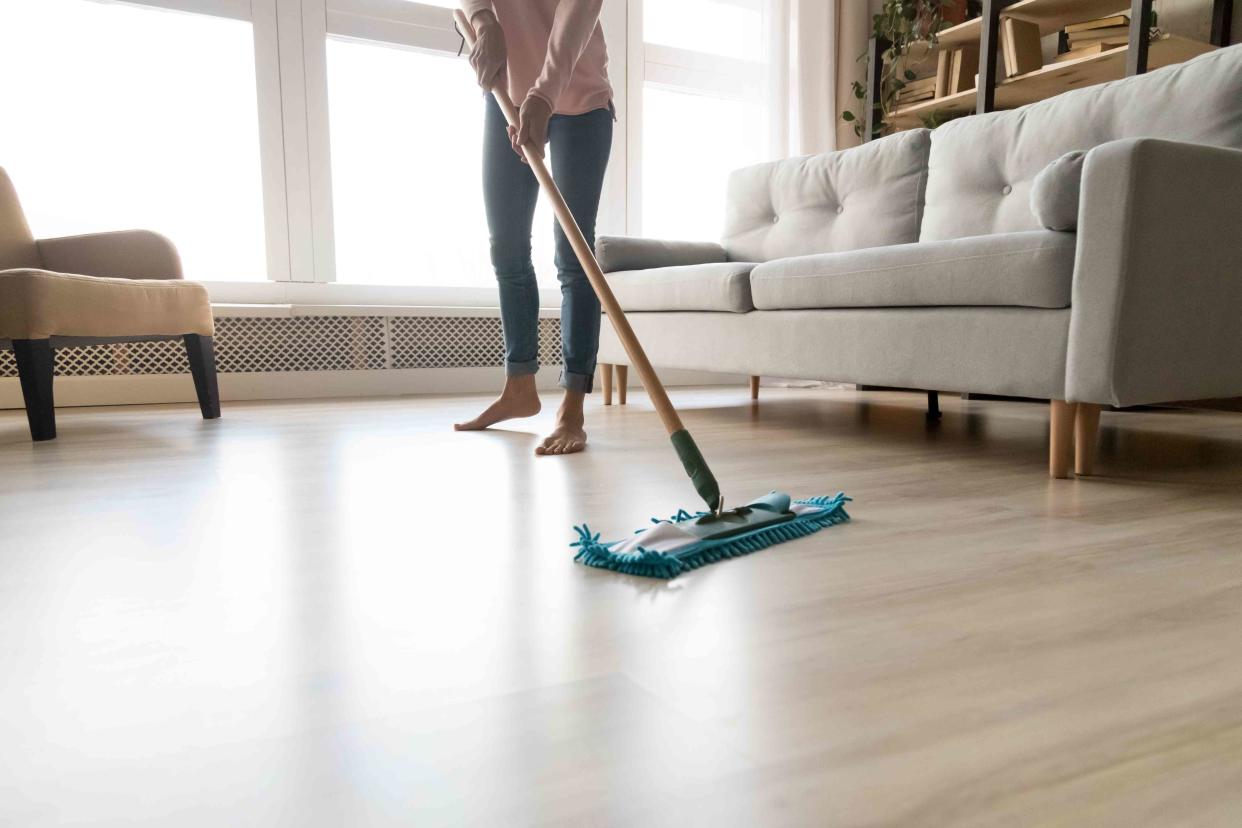How Often Do You Need To Mop Your Floors?

Getty Images
Keeping your home in tip-top shape can be a struggle. Sometimes it’s hard to know how often you should be deep cleaning to maintain that sparkle—especially when it comes to your floors. Below, we’ve asked an expert for his take on how often you actually need to mop your floors, the best mopping techniques, and what to look for when shopping for a great mop.
How Often Do You Need To Mop Your Floors?
According to Jorge Leiva, owner of Bee Maids House Cleaning Services in Houston, Texas, there's no one answer to this question that fits everyone. But as a rule of thumb, you should mop your floors at least once a week—especially in areas that are more likely to get stains from drips and spills, like the kitchen and bathroom. “Of course, you need to vacuum or sweep the floor before mopping,” explains Leiva. “And depending on how clean you want to keep your home, you may need to do it more often than once a week.”
Another thing to consider is how many people you live with. The more people you have in your home, the more traffic you'll have on your floors. However, mopping your floors should be focused on cleaning up visible signs of dirtiness, rather than frequency, explains Leiva. “In our business, we had a client that we visited twice per week (Tuesday and Friday), and their floors were terrible each and every time,” he says. “On the other hand, we had a couple that we visited every other week, and their floors were immaculate—I'm sure that lady touched up her floors between visits.”
Signs That It's Time To Mop
Many times it's obvious a floor is dirty, but there can be more subtle signs. Here are some indications that it's time to get out the mop:
Dingy or faded floor: Over time, constant foot traffic will cause a floor to fade and grow dull.
Dust bunnies collecting in corners: Hair, dust, and lint are often swept to corners, where they begin to grow a life of their own.
Sticky spots: If you notice your shoes sticking every time you walk across the kitchen, it's time to give that floor a scrub.
Grubby-looking grout: Even with frequent sweeping, crumbs and dirt can settle between tiles. Spills often seep into grout and cause it to look grimy.
Allergies acting up: Homeowners who are sensitive to dust, pollen, or animal hair may notice their allergies acting up before anything else.
How To Prepare For Mopping
It's important to sweep or vacuum your floors before mopping them. “This will help ensure that you're not just spreading around dirt and germs,” explains Leiva. “Use a flat-head mop and several mop pads—many people use a mop wringer to mop the floors, but this can actually end up making the problem worse."
Tips For Extending Time Between Mop Sessions
Make sure you regularly sweep or vacuum floors. “This will help to ensure that your floors are clean and free of any debris that could potentially damage your flooring,” explains Leiva. “Pick up any bread crumbs, hair, etc., as soon as you see them—this will help to keep your floors looking clean and tidy.”
Clean up any drips as soon as they happen, as this will help to prevent any water damage or stains on your floors. “Keep two doormats per entrance—one outside your door and one inside as a double layer of protection against unwanted debris,” explains Leiva. “This will help to keep your floors clean and free of dirt and dust.”
What To Look For When Purchasing A New Mop
According to Leiva, there are many people who use disposable mop pads. However, he doesn’t believe that they are the best option. “They can only be used once, which makes them not very cost-effective,” he explains. “They also aren't good for the environment.”
Instead, Leiva recommends microfiber mop pads. “The microfiber material is great for picking up and holding dirt, leaving your hard surface flooring sparkling and streak-free,” he says. “You can use it effectively with plain water, or use a cleaner designed for your floors.
Related: The Best Spray Mops For Every Floor Type, According To Months Of Testing
For more Southern Living news, make sure to sign up for our newsletter!
Read the original article on Southern Living.

